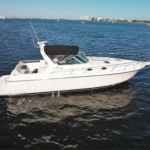 Marine Surveyor 33445 – What Are the Key Takeaways from a Marine Surveyor’s Assessment of Seacocks and Thru-Hull Valves?
Marine Surveyor 33445 – What Are the Key Takeaways from a Marine Surveyor’s Assessment of Seacocks and Thru-Hull Valves?
When it comes to ensuring the safety and integrity of your vessel, one of the most important aspects to consider is the condition of seacocks and thru-hull valves. These critical components play a vital role in maintaining the watertight integrity of your boat, and any issues with them can pose significant risks.
As a marine surveyor 33445 with Suncoast Marine Surveying, I have assessed countless vessels and have seen firsthand the importance of properly installed and maintained seacocks and thru-hull valves. In this article, we will discuss the key takeaways from a marine surveyor’s assessment of these essential components.
Seacocks and thru-hull valves are designed to allow water to enter or exit the vessel while maintaining a watertight seal when closed. They are typically made of bronze or marelon, as these materials are durable and resistant to corrosion in marine environments. During a marine surveyor’s inspection, we closely examine the condition of these components to ensure they are functioning correctly and are free from defects.
One common issue that we often encounter during our assessments is inadequate installation or maintenance of seacocks and thru-hull valves. Improperly installed components can be prone to leaks or failures, which can lead to flooding and potentially sinking of the vessel. It is crucial that these components are installed according to manufacturer specifications and are regularly inspected and maintained to prevent any issues.
Another key takeaway from a marine surveyor’s assessment is the importance of identifying signs of corrosion or deterioration in seacocks and thru-hull valves. Corrosion can weaken the structure of these components and compromise their ability to maintain a watertight seal. It is essential to inspect these components regularly for any signs of rust, pitting, or other forms of corrosion and address any issues promptly to prevent further damage.
During our assessments, we also pay close attention to the condition of the through-hull fittings where seacocks and thru-hull valves are mounted. These fittings should be securely fastened to the hull and should not show signs of movement or damage. Any issues with the through-hull fittings can affect the performance of seacocks and thru-hull valves and should be addressed immediately.
In conclusion, the key takeaways from a marine surveyor’s assessment of seacocks and thru-hull valves include ensuring proper installation and maintenance, identifying signs of corrosion or deterioration, and inspecting through-hull fittings for any issues. By following these guidelines and addressing any issues promptly, you can help ensure the safety and integrity of your vessel.
If you are in need of a thorough assessment of your vessel’s seacocks and thru-hull valves, contact Suncoast Marine Surveying today. Our team of experienced marine surveyors 33445 will provide you with a comprehensive inspection of these critical components to help keep your vessel safe on the water.r


